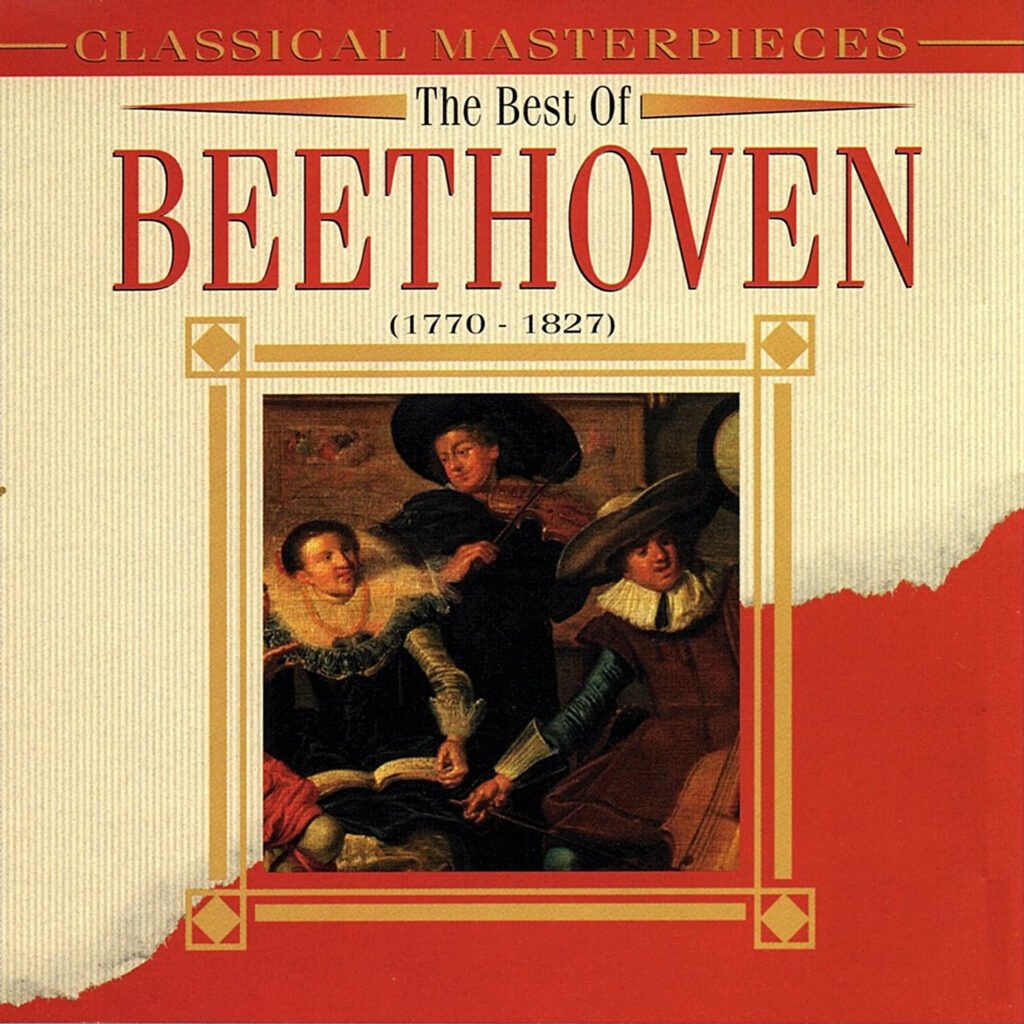Ludwig van Beethoven, a towering figure in classical music, continues to captivate audiences worldwide with his timeless compositions. His ability to express the deepest emotions, from the depths of despair to the heights of triumph, has earned him a place as one of history’s most revered composers. Best of Beethoven brings together some of his most beloved works, performed by an exceptional group of musicians, each bringing their own interpretation and passion to the music.
This compilation showcases a range of Beethoven’s masterpieces, from his iconic piano sonatas and concertos to his stirring violin and cello works. Featuring world-class artists such as Eliso Bokvadze, Isadora Schwarzberg, Nodar Gubunia, Ilya Ioff, Sergei Slovaschevsky, and many others, this collection is a celebration of the genius of Beethoven, offering listeners a chance to experience his music in all its beauty and complexity.
Adagio Sostenuto – Piano Sonata No. 14 in C-sharp Minor Op. 27, No. 2 “Moonlight”
The Moonlight Sonata, as it is affectionately known, is perhaps Beethoven’s most famous piano work. The first movement, Adagio Sostenuto, is a hauntingly beautiful piece that has become synonymous with melancholy and introspection. Performed here by Eliso Bokvadze, the delicate and flowing nature of the piece is brought to life with elegance, capturing the quiet, contemplative mood of the sonata. The interplay between the left-hand accompaniment and the right-hand melody evokes a sense of stillness and reverie, a perfect example of Beethoven’s mastery in creating deeply emotive, yet simple, musical textures.
Allegretto – Piano Sonata No. 17 in D Minor Op. 31, No. 2 “Tempest”
The Tempest Sonata is a work of contrasts — its stormy nature giving way to moments of reflection and calm. The second movement, Allegretto, is a moment of tranquility amidst the turbulence of the sonata. In this performance by Eliso Bokvadze, the delicacy and subtlety of the movement shine through, offering a sense of balance between tension and release. The emotional depth of this piece speaks to Beethoven’s ability to express inner turmoil and resolution through music, making it one of his most poignant works.
Romance for Violin & Orchestra No. 2 in F Major Op. 50
Beethoven’s Romance for Violin and Orchestra No. 2 in F Major is a graceful and lyrical piece, full of charm and elegance. In this recording, Isadora Schwarzberg takes center stage with the Lithuanian Chamber Orchestra, conducted by Saulius Sondeckis. The violin’s tender, singing quality is beautifully complemented by the orchestra, creating a rich, harmonious sound. The gentle, flowing melody in the violin conveys a sense of intimacy and longing, demonstrating Beethoven’s ability to compose works that transcend time and remain emotionally resonant to this day.
Für Elise – Bagatelle for Piano in A Minor, WoO 59
One of Beethoven’s most recognized works, Für Elise is a playful and whimsical piece that has captured the imagination of generations. The charm of the piece lies in its simple, yet memorable, melody. Performed by Eliso Bokvadze, the piece is brought to life with a light touch and a sense of carefree joy. Though relatively short, the Bagatelle is filled with delightful contrasts and moments of lyrical beauty, showcasing Beethoven’s talent for creating music that is both accessible and profound.
Adagio Cantabile – Piano Sonata No. 8 in C Minor Op. 13 “Pathétique”
The Pathétique Sonata is one of Beethoven’s most dramatic and expressive works, and the second movement, Adagio Cantabile, is a slow, deeply emotional reflection on loss and longing. Eliso Bokvadze delivers a stirring performance of this beautiful, lyrical movement, capturing the essence of Beethoven’s yearning and introspection. The simplicity of the melody, paired with the profound depth of the harmonies, makes this movement one of the most moving pieces in the classical repertoire.
Adagio Un Poco Mosso – Piano Concerto No. 5 in E-flat Major Op. 73 “Emperor”
The Emperor Concerto is Beethoven’s final piano concerto, a majestic and grandiose work that blends virtuosic piano writing with orchestral grandeur. The second movement, Adagio Un Poco Mosso, stands in contrast to the boldness of the outer movements, offering a lyrical and reflective moment of serenity. Nodar Gubunia, with the Tbilisi Symphony Orchestra, conducted by Jansug Kakhidze, delivers a stunning rendition, with Gubunia’s delicate phrasing and the orchestra’s rich, warm sound creating an atmosphere of introspection and peace. The movement’s profound emotional depth is a testament to Beethoven’s ability to convey a sense of spiritual transcendence through music.
Allegro – Sonata for Violin and Piano No. 5 in F Major Op. 24 “Spring”
The Spring Sonata is one of Beethoven’s most cheerful and uplifting chamber works. The opening movement, Allegro, bursts with vitality, evoking the sense of renewal and joy that comes with the arrival of spring. Ilya Ioff (violin) and Igor Uljash (piano) perform this movement with great energy and precision, highlighting Beethoven’s playful and exuberant musical style. The bright, lively melodies are accompanied by a buoyant rhythm, creating a sense of movement and joy that mirrors the blossoming of nature.
Allegro, Ma Non Tanto – Sonata for Cello and Piano No. 3 in A Major Op. 69
The Cello Sonata No. 3 in A Major is a work of lyrical beauty and emotional depth. The first movement, Allegro, Ma Non Tanto, is both energetic and lyrical, with the cello and piano intertwining in an intimate conversation. Sergei Slovaschevsky (cello) and Igor Uljash (piano) bring a sense of both lightness and gravity to the performance, perfectly capturing the balance of elegance and passion that defines this sonata. Beethoven’s use of the cello, with its rich, resonant sound, adds an extra layer of emotional complexity to the piece.
Scherzo, Allegro Molto – Sonata for Cello and Piano No. 3 in A Major Op. 69
The second movement, Scherzo, Allegro Molto, is a lively and playful contrast to the first. The music is fast-paced, full of rhythmic energy, and full of Beethoven’s trademark wit. In this performance, Sergei Slovaschevsky and Igor Uljash bring a sense of joy and lightheartedness to the music, showcasing Beethoven’s ability to combine technical brilliance with humor and charm. The movement’s vibrant energy leaves listeners with a sense of exhilaration, rounding out this cello sonata in a brilliant way.
Conclusion: A Brilliant Collection of Beethoven’s Best
Best of Beethoven offers a captivating overview of the composer’s incredible body of work, spanning some of his most famous piano sonatas, concertos, and chamber music. Whether it’s the deeply introspective Moonlight Sonata, the fiery energy of the Spring Sonata, or the regal grandeur of the Emperor Concerto, this collection brings Beethoven’s music to life in fresh and vibrant ways. The performances by artists like Eliso Bokvadze, Isadora Schwarzberg, Nodar Gubunia, Ilya Ioff, and Sergei Slovaschevsky are exemplary, each bringing their own unique interpretation and artistry to Beethoven’s compositions. For anyone who appreciates classical music, this album is a must-have, offering a rich, diverse, and emotionally resonant experience of one of the greatest composers in history.

